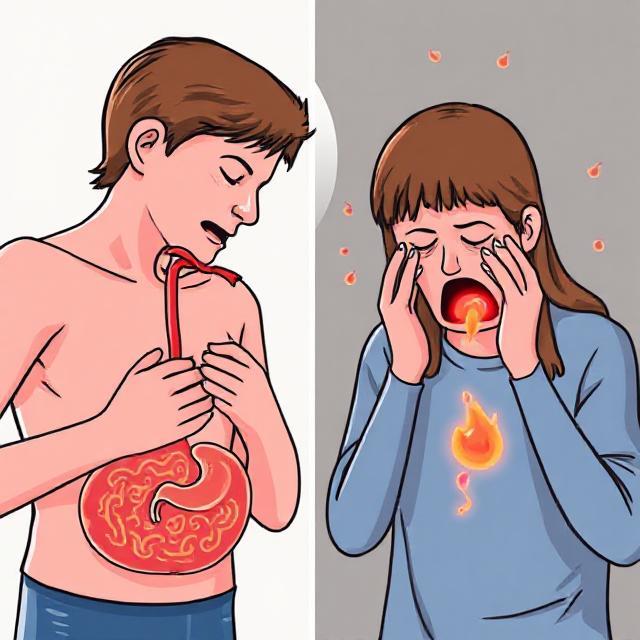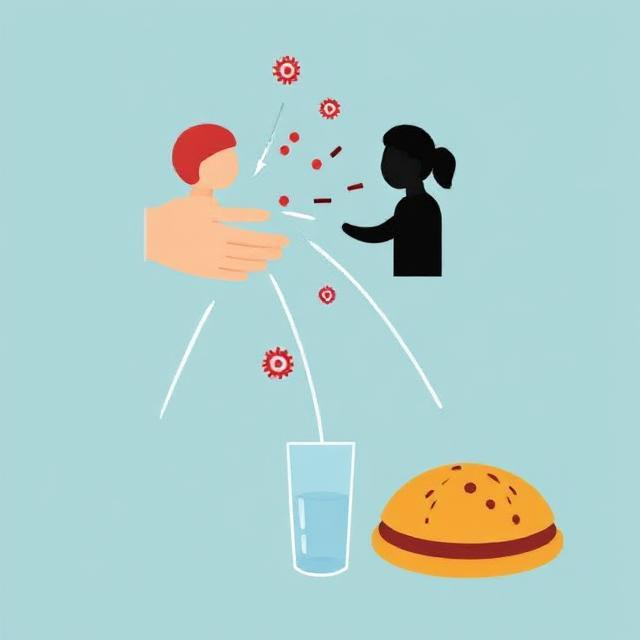Food Poisoning vs. Stomach Flu—both cause digestive distress but have different origins. Food poisoning results from consuming contaminated food, leading to symptoms like nausea, vomiting, diarrhea, and stomach cramps within hours. It is caused by bacteria, viruses, or toxins in food. In contrast, the stomach flu (viral gastroenteritis) is a viral infection spread through contact with infected individuals or surfaces. It also causes nausea, vomiting, diarrhea, and fever but lasts longer. While food poisoning often resolves quickly, the stomach flu can persist for days. Proper hygiene, hydration, and rest help manage both conditions, but severe cases may require medical attention.

Food Poisoning vs. Stomach Flu
Food poisoning and stomach flu (viral gastroenteritis) share many symptoms, making it difficult to distinguish between them. However, understanding their differences can help in managing symptoms and seeking appropriate treatment. Below is a detailed comparison:
1. Causes
-
Food Poisoning:
-
Caused by consuming food or water contaminated with bacteria (e.g., Salmonella, E. coli, Listeria), toxins (e.g., Staphylococcus aureus), parasites (e.g., Giardia), or viruses (e.g., Norovirus).
-
Common sources: Undercooked meat, raw eggs, unpasteurized dairy, contaminated produce, or improperly stored food.
-
-
Stomach Flu (Viral Gastroenteritis):
-
Caused by viruses such as Norovirus, Rotavirus, or Adenovirus.
-
Spreads through person-to-person contact, contaminated surfaces, or contaminated food/water.
-

2. Onset of Symptoms
-
Food Poisoning:
-
Symptoms appear rapidly, usually within hours (2–6 hours) after eating contaminated food.
-
Exception: Some bacteria (e.g., Listeria) may take days to cause symptoms.
-
-
Stomach Flu:
-
Symptoms typically develop 1–3 days after exposure to the virus.
-
3. Symptoms Comparison
| Symptom | Food Poisoning | Stomach Flu |
|---|---|---|
| Nausea/Vomiting | Common (may be severe) | Common |
| Diarrhea | Often watery, sometimes bloody | Watery, rarely bloody |
| Fever | Possible (depends on the pathogen) | Low-grade fever common |
| Stomach Cramps | Severe | Moderate to severe |
| Body Aches | Less common | Common (especially with norovirus) |
| Headache | Possible | Common |
| Dehydration | High risk (due to vomiting/diarrhea) | High risk |
| Duration | 1–3 days (some cases longer) | 1–10 days (usually 24–48 hrs) |
Key Differences:
-
Bloody diarrhea is more likely with bacterial food poisoning (e.g., E. coli, Shigella).
-
Stomach flu often includes body aches and mild fever, while food poisoning may cause sudden, intense symptoms.
4. Contagiousness
-
Food Poisoning:
-
Not contagious unless caused by a virus (e.g., Norovirus) or spread via poor hygiene.
-
-
Stomach Flu:
-
Highly contagious (spreads through vomit, stool, or contaminated surfaces).
-
5. Treatment & Recovery
Both conditions usually resolve on their own, but management includes:
-
Hydration: Drink clear fluids (water, oral rehydration solutions).
-
Rest: Avoid solid foods until vomiting stops.
-
Medications:
-
Anti-diarrheals (e.g., loperamide) may help but avoid if bloody diarrhea (risk of worsening infection).
-
Antibiotics are rarely needed (only for severe bacterial food poisoning).
-
When to Seek Medical Help:
-
High fever (>101.5°F or 38.6°C)

-
Blood in vomit/stool
-
Signs of dehydration (dizziness, dry mouth, no urination)
-
Symptoms lasting >3 days
6. Prevention
-
Food Poisoning:
-
Cook meat thoroughly, avoid cross-contamination, refrigerate leftovers promptly.
-
-
Stomach Flu:
-
Wash hands frequently, disinfect surfaces, avoid contact with infected individuals.
-

Final Summary
-
Food poisoning = fast onset (hours), linked to food, possibly severe cramps.
-
Stomach flu = slower onset (days), viral, more body aches, highly contagious.
If symptoms are severe or prolonged, consult a doctor for proper diagnosis and treatment.
